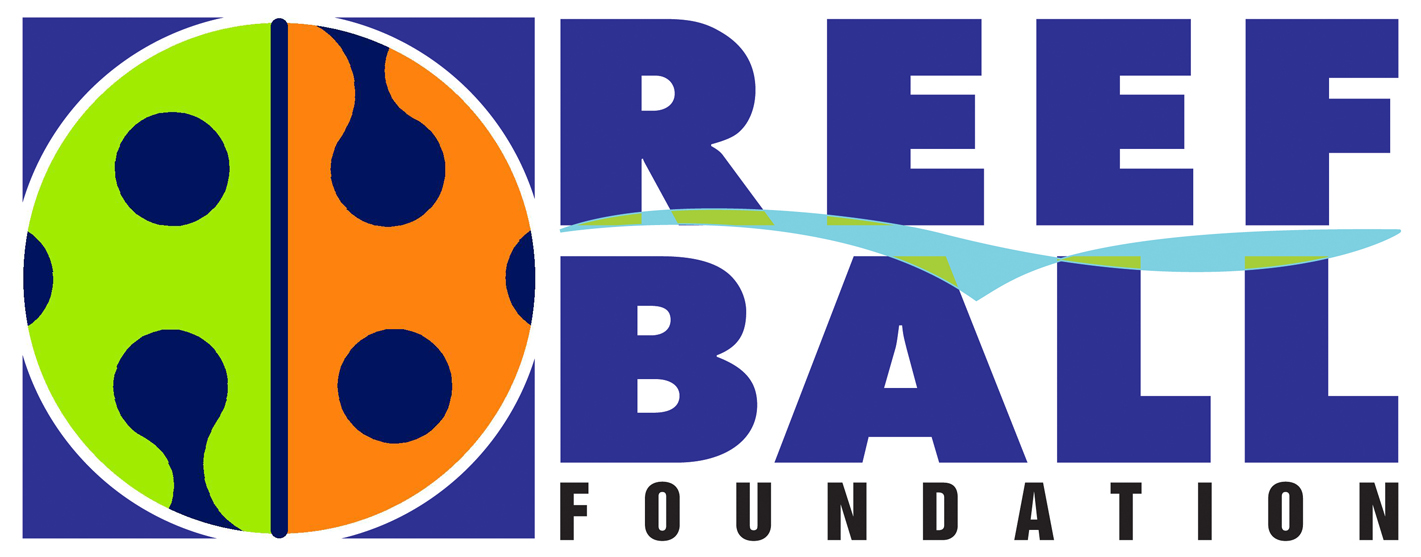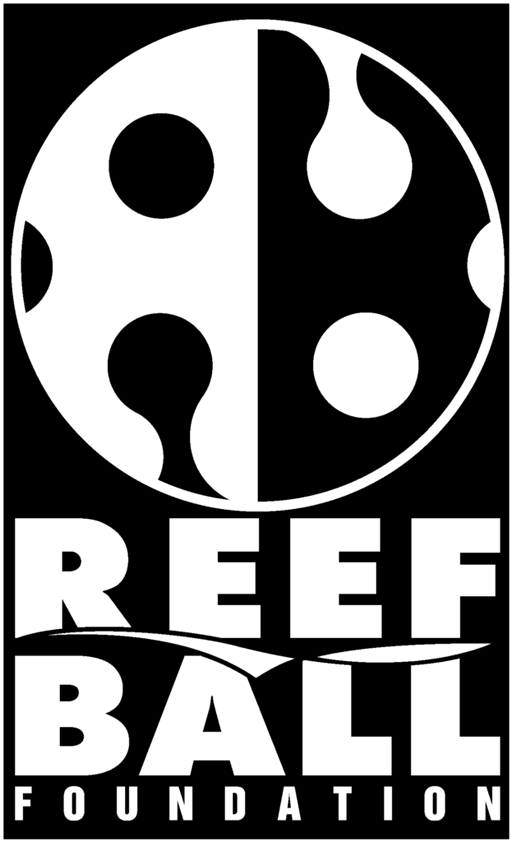concrete specs

Reef Ball Typical Concrete Specifications
PART I - GENERAL
1.01 Section Includes
- Concrete proportioning and products to be used to secure concrete, which when hardened will produce a required strength, permeability, and resistance to weathering in a reef environment.
1.04 References
- ACI-211.191-Standard Practice for Selecting Proportions for Normal, Heavyweight, and Mass Concrete.
- ASTM C 260- Standard Specifications for Air-Entraining Admixtures for Concrete.
- ASTM-C 1116 Type III- Standard Specifications for Fiber Reinforced Concrete or Shotcrete.
- ACI - 305R -91- Hot Weather Concreting.
- ACI - 306R -88- Cold Weather Concreting.
- ACI - 308- Standard Practice for Curing Concrete.
- ASTM C 618-Fly Ash For Use As A Mineral Admixture in Portland Cement Concrete.
- ASTM C 494-92- Standard Specifications for Chemical Admixtures for Concrete.
- ASTM C 1202-91- Electrical Indication of Concrete's Ability to Resist Chloride Ion Penetration.
- ASTM C 33- Concrete Aggregates.
- ASTM C 94- Ready Mix Concrete.
- ASTM C 150-Portland Cement.
- ACI 304- Recommended Practice For Measuring, Mixing, Transporting and Placing concrete.
- ASTM C 39 (Standard Specifications For Compressive Testing)
- ASTM C-1240-93 (Standard Specifications for Silica Fume Concrete)
PART II PRODUCTS
2.01 Portland Cement: Shall be Type II and conform to ASTM C-150
2.02 Fly Ash: Shall meet requirements of ASTM C-618, Type F. And must be proven to be non-toxic as defined by the Army Corps of Engineers General Artificial Reef Permits. Fly Ash is not permitted in the State of Georgia and in most Atlantic States. (In October, 1991, The Atlantic States Marine Fisheries Commission adopted a resolution that opposes the use of fly ash in artificial reefs other than for experimental applications until the Army Corps of Engineers develop and adopt guidelines and standards for use.)
2.03 Water: Shall be potable and free from deleterious substances and shall not contain more that 1000 parts per million of chlorides or sulfates and shall not contain more than 5 parts per million of lead, copper or zinc salts and shall not contain more than 10 parts per million of phosphates.
2.04 Fine Aggregate: Shall be in compliance with ASTM C-33.
2.05 Coarse Aggregate: Shall be in compliance with ASTM C-33 #8 (pea gravel). (Up to 1 inch aggregate can be substituted with permission from the mold user.) Limestone aggregate is preferred if the finished modules are to be used in tropical waters.
2.06 Concrete Admixtures: Shall be in compliance with ASTM C-494.
2.07 Required Additives: The following additives shall be used in all concrete mix designs when producing the Reef Ball Development Group's product line:
- High Range Water Reducer: Shall be ADVA Flow 120 or 140.
- Silica Fume: Shall be Force 10,000 Densified in Concrete Ready Bags as manf. by W.R. Grace. (ASTM C-1240-93) or any of the permitted equivalent silica fume Brands as defined in the training manual Appendix K
- Air-Entrainer: ONLY IF ADVA is not used: Shall be Darex II as manf. by W.R. Grace (ASTM C-260)
2.08 Optional Additives: The following additives may be used in concrete mix designs when producing Reef Ball Development's product line.
- Fibers. Shall be either Microfibers as manf. by W.R. Grace, or Fibermesh Fibers (1 1/2 inches or longer) as manf. by Fibermesh. Either product can be in ready bags.
- Accelerators: Any Non- Calcium Chloride or Daracell as manf. by W.R. Grace may be used. (ASTM C-494 Type C or E)
- Retarders: Shall be in compliance with ASTM-C-494-Type D as in Daratard 17 manf. by W.R. Grace
2.09 Prohibited Admixtures: All other admixtures are prohibited. Other admixtures can be submitted for approval by the Reef Ball Foundation Inc. Services Division by sending enough sample to produce five yards of concrete, the current MSDS, and chemical composition (which will be kept confidential by RBDG Ltd.) A testing fee of $2,500 must accompany the sample. Temporary approval will be granted or denied within 10 days based on chemical composition, but final approval may take up to 3 months since samples must be introduced in a controlled aquarium environment to assess impacts on marine and freshwater species.
PART III Concrete Proportioning:
- General: The intent of the following proportions is to secure concrete of homogeneous structure which will have required strength and resistance to weathering.
- Proportions:
| One Cubic Yard | One Cubic Meter | |
| Cement: | 600 lbs. (Min.) | 356 kg |
| Aggregate: | 1800 lbs. | 1068 kg |
| Sand: | 1160 lbs | 688 kg |
| Water: | 240 1bs. (Max.) | 142 kg |
| Force 10K: | 50 lbs | 30 kg |
| Grace Microfibers | .25 bag | .3 bag |
|
*Adva Flow 120 or Adva Flow 140 |
3.5-5 ounces per 100 lbs cement or 6-10 ounces per 100 lbs cement |
1 |
*NOTE: Adjust Adva dosage as needed to obtain workable, placeable mix (170-250mm / 7-10 inch slump), and to achieve .40 w/c ratio.
Micro Fibers: 0-3# (Max.) as needed to reduce micro cracking 1# (Min.) especially recommended if Silica Fume exceeds 50# or in situations where the sun will heat one side of your mold unevenly causing expansion of inflatable bladders on that side and stressing the concrete as it sets up.
Micro-synthetic Fiber Notes
Expressly formulated to address early age cracking problems, Fibermesh® or WR Grace micro-synthetic fibers prevent 80-100% of all cracks in the plastic state - precisely when most cracks occur. During the plastic settlement phase, the fibers create a three-dimensional support network that resists the downward pull of gravity, thus keeping aggregates in suspension and promoting uniform bleeding. This network increases the tensile strain capacity of concrete during the plastic shrinkage phase as well.
Accelerator: As needed to achieve de-molding no sooner than: 3-4 hours for heavy duty molds (All Polyform side balls) 6-7 hours for standard molds (Molds with any tether balls)
NOTE: Silica Fume or Force 10K shall be dosed at a 10# minimum in Bay Balls and Pallet Balls while Ultra & Reef Balls shall require a minimum of 25#. All molds must use at least 50# for floating deployments. All mold sizes must use at least 50# for use in tropical waters unless special curing procedures are followed.* This product is being specified not only for strength, but also to reduce pH to spur coral growth, to reduce calcium hydroxide, and to increase sulfate resistance. It is a non-toxic pozzalan.
* Special curing procedures for tropical waters without 50# of Silica Fume per yard should include storage in a fresh water or high humidity environment for a minimum of 60 days or less with higher temperatures, or until the surface pH of the modules is below 9.5 pH when placed in seawater.
NOTE: End of day concrete may be used, but follow these additional requirements.
-Do not use concrete that has a temperature of over 100 degrees Fahrenheit -The original mix must have been at least 3,500 PSI -50# of added microsilica or more is required unless microsilica at that dose was already in the starting mix -Add additional Portland if needed to achieve a .4 w/c ratio. Take into account water added on site -Advise mold user to allow extra time for curing to achieve minimum de-molding strength. -Mold or module user must be notified that EOD waste was used.
NOTE: Fly Ash, when permitted, may be used as a substitution for cement up to a maximum replacement of 15% and as an additional substitute for microsilica at 30% to 40% of cementitious material. (Call RBDG for details.)
Part IV Concrete Testing Requirements:
- Compressive strengths shall be tested in accordance with ASTM C 39. Compressive strengths shall reach a minimum of the following table at the time of use of at least:
| Super/Ultra/Reef Ball | Pallet Ball | Bay Ball and all smaller sizes | |
| Floating Deployment | 8,500+ | 7,000+ | 6,000+ |
| Barge Deployment | 7,000+ | 5,500+ | 4,000+ |
| To remove from mold | 750+ | 750+ | 750+ |
| To lift from base | 1,500+ | 1,200+ | 1,000+ |
- Permeability of concrete shall be tested in accordance with ASTM C 1202-91. Coulomb requirement shall be 2500 coulombs or less at 90 days. End of day waste shall be 3000 coulombs or less at 90 days.
THIS SPECIFICATION SHEET IS ONLY A SAMPLE. CONTACT RBDG FOR CUSTOM SPECIFICATIONS.
Minimum Standards for RBDG Authorized Contractors
1) All deployments made by authorized contractors must have at least 90% of modules upright and intact or they must supply free deployed replacement to purchaser. This is REGARDLESS of what the customer says is acceptable.
2) All new construction after Jan. 1, 1998 must use ADVA Flow superplastisizer rather than WRD-19, Reduce the amount of air entrainment by 35-50% so that entrainment remains at 6% +/- 2%. (This will not impact your costs).
2a) All new construction after July 2002 must have Attachment Adapter Plug system installed and at least 50% of the recommended number of attachement adapters for the particular sized Reef Ball must be usable.
3) All Reef Balls must be constructed with a "wavy" bottom formed by adding sand in the mold before inserting center bladder.
4) The rinsing of the outside layer of concrete is not optional to expose the surface texture due to the pH rise on the surface of the poorly set concrete. (If rinsing is impractical, use a non-oil based biodegradable mold-releasing compound instead of sugar water. Increase air entrainment to 8% and do not tap the concrete into the mold heavily to create as much "honeycombing" as you can.)
5) The following are MINIMUM guidelines for microsilica use, primarily for pH reduction. Again, these are REGARDLESS of what the customer says is acceptable.
Hard Coraled Waters (Florida border & south on East Coast, Hernando County and south on Gulf.) (Anywhere near the Flower Gardens of Texas, anywhere near Grey's Reef in SC)
Deployed less than 45 days from casting = 50 lbs/yard
Deployed > 45 days < 90 days from casting = 45 lbs/yard
Deployed > 91 days < 120 days from casting = 40 lbs/yard
Deployed > 121 days < 150 days from casting = 35 lbs/yard
Deployed > 151 days < 180 days from casting = 30 lbs/yard
Deployed > 181 days < 210 days from casting = 25 lbs/yard
Deployed > 211 days < 240 days from casting = 20 lbs/yard
Deployed > 240 from casting = 15 lbs/yard
Temperate / Cool Waters (North of above & all of West Coast)
Deployed less than 29 days from casting = 50 lbs/yard
Deployed > 30 days < 90 days from casting = 30 lbs/yard
Deployed > 91 days < 120 days from casting = 25 lbs/yard
Deployed > 121 days < 150 days from casting = 20 lbs/yard
Deployed > 151 days < 180 days from casting = 15 lbs/yard
Deployed > 181 days < 210 days from casting = 10 lbs/yard
Deployed > 211 days < 240 days from casting = 5 lbs/yard
Deployed > 240 from casting = not required
6) End of day waste still requires full 50 lbs/yard of Mircosilica regardless of location/time
7) All other proprietary standards, including an approved mix design must be upheld.


